Minghui Wu
Residual Cross-Attention Transformer-Based Multi-User CSI Feedback with Deep Joint Source-Channel Coding
May 26, 2025Abstract:This letter proposes a deep-learning (DL)-based multi-user channel state information (CSI) feedback framework for massive multiple-input multiple-output systems, where the deep joint source-channel coding (DJSCC) is utilized to improve the CSI reconstruction accuracy. Specifically, we design a multi-user joint CSI feedback framework, whereby the CSI correlation of nearby users is utilized to reduce the feedback overhead. Under the framework, we propose a new residual cross-attention transformer architecture, which is deployed at the base station to further improve the CSI feedback performance. Moreover, to tackle the "cliff-effect" of conventional bit-level CSI feedback approaches, we integrated DJSCC into the multi-user CSI feedback, together with utilizing a two-stage training scheme to adapt to varying uplink noise levels. Experimental results demonstrate the superiority of our methods in CSI feedback performance, with low network complexity and better scalability.
Hypergraph Multi-modal Large Language Model: Exploiting EEG and Eye-tracking Modalities to Evaluate Heterogeneous Responses for Video Understanding
Jul 11, 2024



Abstract:Understanding of video creativity and content often varies among individuals, with differences in focal points and cognitive levels across different ages, experiences, and genders. There is currently a lack of research in this area, and most existing benchmarks suffer from several drawbacks: 1) a limited number of modalities and answers with restrictive length; 2) the content and scenarios within the videos are excessively monotonous, transmitting allegories and emotions that are overly simplistic. To bridge the gap to real-world applications, we introduce a large-scale \textbf{S}ubjective \textbf{R}esponse \textbf{I}ndicators for \textbf{A}dvertisement \textbf{V}ideos dataset, namely SRI-ADV. Specifically, we collected real changes in Electroencephalographic (EEG) and eye-tracking regions from different demographics while they viewed identical video content. Utilizing this multi-modal dataset, we developed tasks and protocols to analyze and evaluate the extent of cognitive understanding of video content among different users. Along with the dataset, we designed a \textbf{H}ypergraph \textbf{M}ulti-modal \textbf{L}arge \textbf{L}anguage \textbf{M}odel (HMLLM) to explore the associations among different demographics, video elements, EEG and eye-tracking indicators. HMLLM could bridge semantic gaps across rich modalities and integrate information beyond different modalities to perform logical reasoning. Extensive experimental evaluations on SRI-ADV and other additional video-based generative performance benchmarks demonstrate the effectiveness of our method. The codes and dataset will be released at \url{https://github.com/suay1113/HMLLM}.
The USTC-NERCSLIP Systems for The ICMC-ASR Challenge
Jul 02, 2024


Abstract:This report describes the submitted system to the In-Car Multi-Channel Automatic Speech Recognition (ICMC-ASR) challenge, which considers the ASR task with multi-speaker overlapping and Mandarin accent dynamics in the ICMC case. We implement the front-end speaker diarization using the self-supervised learning representation based multi-speaker embedding and beamforming using the speaker position, respectively. For ASR, we employ an iterative pseudo-label generation method based on fusion model to obtain text labels of unsupervised data. To mitigate the impact of accent, an Accent-ASR framework is proposed, which captures pronunciation-related accent features at a fine-grained level and linguistic information at a coarse-grained level. On the ICMC-ASR eval set, the proposed system achieves a CER of 13.16% on track 1 and a cpCER of 21.48% on track 2, which significantly outperforms the official baseline system and obtains the first rank on both tracks.
Deep Joint Semantic Coding and Beamforming for Near-Space Airship-Borne Massive MIMO Network
May 30, 2024



Abstract:Near-space airship-borne communication network is recognized to be an indispensable component of the future integrated ground-air-space network thanks to airships' advantage of long-term residency at stratospheric altitudes, but it urgently needs reliable and efficient Airship-to-X link. To improve the transmission efficiency and capacity, this paper proposes to integrate semantic communication with massive multiple-input multiple-output (MIMO) technology. Specifically, we propose a deep joint semantic coding and beamforming (JSCBF) scheme for airship-based massive MIMO image transmission network in space, in which semantics from both source and channel are fused to jointly design the semantic coding and physical layer beamforming. First, we design two semantic extraction networks to extract semantics from image source and channel state information, respectively. Then, we propose a semantic fusion network that can fuse these semantics into complex-valued semantic features for subsequent physical-layer transmission. To efficiently transmit the fused semantic features at the physical layer, we then propose the hybrid data and model-driven semantic-aware beamforming networks. At the receiver, a semantic decoding network is designed to reconstruct the transmitted images. Finally, we perform end-to-end deep learning to jointly train all the modules, using the image reconstruction quality at the receivers as a metric. The proposed deep JSCBF scheme fully combines the efficient source compressibility and robust error correction capability of semantic communication with the high spectral efficiency of massive MIMO, achieving a significant performance improvement over existing approaches.
An Integrated Visual Analytics System for Studying Clinical Carotid Artery Plaques
Aug 09, 2023



Abstract:Carotid artery plaques can cause arterial vascular diseases such as stroke and myocardial infarction, posing a severe threat to human life. However, the current clinical examination mainly relies on a direct assessment by physicians of patients' clinical indicators and medical images, lacking an integrated visualization tool for analyzing the influencing factors and composition of carotid artery plaques. We have designed an intelligent carotid artery plaque visual analysis system for vascular surgery experts to comprehensively analyze the clinical physiological and imaging indicators of carotid artery diseases. The system mainly includes two functions: First, it displays the correlation between carotid artery plaque and various factors through a series of information visualization methods and integrates the analysis of patient physiological indicator data. Second, it enhances the interface guidance analysis of the inherent correlation between the components of carotid artery plaque through machine learning and displays the spatial distribution of the plaque on medical images. Additionally, we conducted two case studies on carotid artery plaques using real data obtained from a hospital, and the results indicate that our designed carotid analysis system can effectively provide clinical diagnosis and treatment guidance for vascular surgeons.
Reducing the gap between streaming and non-streaming Transducer-based ASR by adaptive two-stage knowledge distillation
Jun 27, 2023Abstract:Transducer is one of the mainstream frameworks for streaming speech recognition. There is a performance gap between the streaming and non-streaming transducer models due to limited context. To reduce this gap, an effective way is to ensure that their hidden and output distributions are consistent, which can be achieved by hierarchical knowledge distillation. However, it is difficult to ensure the distribution consistency simultaneously because the learning of the output distribution depends on the hidden one. In this paper, we propose an adaptive two-stage knowledge distillation method consisting of hidden layer learning and output layer learning. In the former stage, we learn hidden representation with full context by applying mean square error loss function. In the latter stage, we design a power transformation based adaptive smoothness method to learn stable output distribution. It achieved 19\% relative reduction in word error rate, and a faster response for the first token compared with the original streaming model in LibriSpeech corpus.
AutoKary2022: A Large-Scale Densely Annotated Dateset for Chromosome Instance Segmentation
Mar 31, 2023Abstract:Automated chromosome instance segmentation from metaphase cell microscopic images is critical for the diagnosis of chromosomal disorders (i.e., karyotype analysis). However, it is still a challenging task due to lacking of densely annotated datasets and the complicated morphologies of chromosomes, e.g., dense distribution, arbitrary orientations, and wide range of lengths. To facilitate the development of this area, we take a big step forward and manually construct a large-scale densely annotated dataset named AutoKary2022, which contains over 27,000 chromosome instances in 612 microscopic images from 50 patients. Specifically, each instance is annotated with a polygonal mask and a class label to assist in precise chromosome detection and segmentation. On top of it, we systematically investigate representative methods on this dataset and obtain a number of interesting findings, which helps us have a deeper understanding of the fundamental problems in chromosome instance segmentation. We hope this dataset could advance research towards medical understanding. The dataset can be available at: https://github.com/wangjuncongyu/chromosome-instance-segmentation-dataset.
Jointly Complementary&Competitive Influence Maximization with Concurrent Ally-Boosting and Rival-Preventing
Feb 19, 2023



Abstract:In this paper, we propose a new influence spread model, namely, Complementary\&Competitive Independent Cascade (C$^2$IC) model. C$^2$IC model generalizes three well known influence model, i.e., influence boosting (IB) model, campaign oblivious (CO)IC model and the IC-N (IC model with negative opinions) model. This is the first model that considers both complementary and competitive influence spread comprehensively under multi-agent environment. Correspondingly, we propose the Complementary\&Competitive influence maximization (C$^2$IM) problem. Given an ally seed set and a rival seed set, the C$^2$IM problem aims to select a set of assistant nodes that can boost the ally spread and prevent the rival spread concurrently. We show the problem is NP-hard and can generalize the influence boosting problem and the influence blocking problem. With classifying the different cascade priorities into 4 cases by the monotonicity and submodularity (M\&S) holding conditions, we design 4 algorithms respectively, with theoretical approximation bounds provided. We conduct extensive experiments on real social networks and the experimental results demonstrate the effectiveness of the proposed algorithms. We hope this work can inspire abundant future exploration for constructing more generalized influence models that help streamline the works of this area.
Deep Learning-Based Rate-Splitting Multiple Access for Reconfigurable Intelligent Surface-Aided Tera-Hertz Massive MIMO
Sep 18, 2022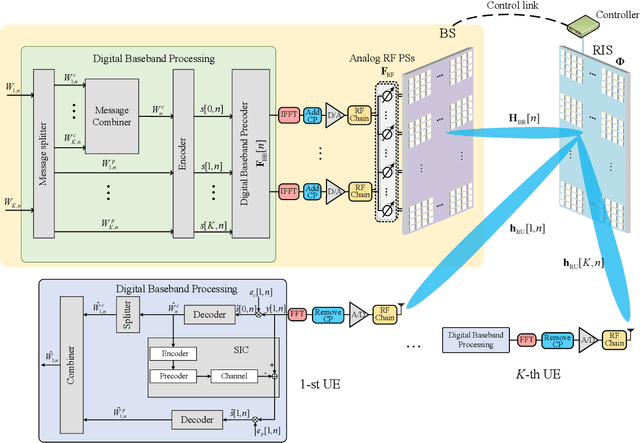
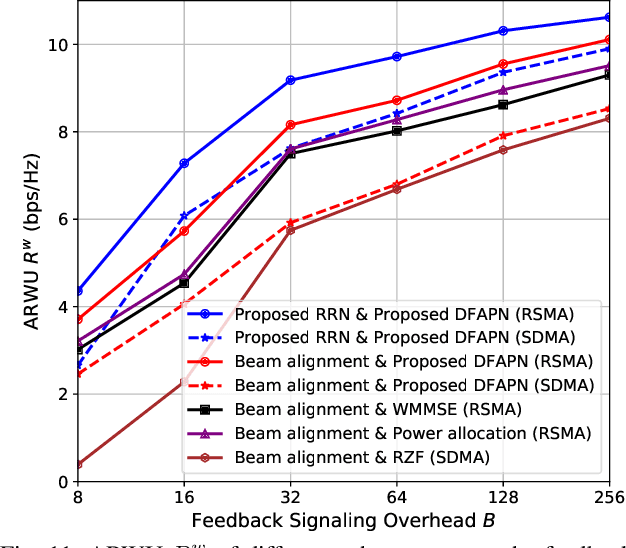
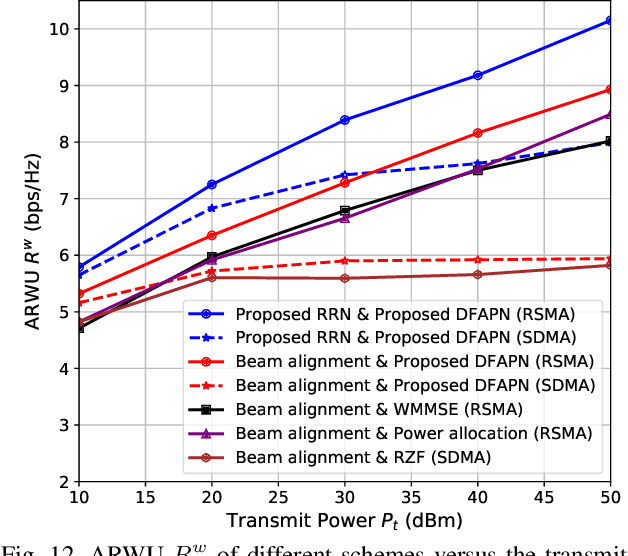
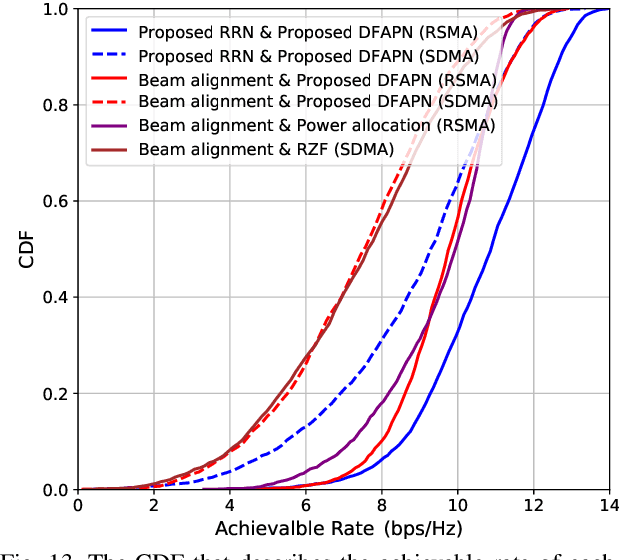
Abstract:Reconfigurable intelligent surface (RIS) can significantly enhance the service coverage of Tera-Hertz massive multiple-input multiple-output (MIMO) communication systems. However, obtaining accurate high-dimensional channel state information (CSI) with limited pilot and feedback signaling overhead is challenging, severely degrading the performance of conventional spatial division multiple access. To improve the robustness against CSI imperfection, this paper proposes a deep learning (DL)-based rate-splitting multiple access (RSMA) scheme for RIS-aided Tera-Hertz multi-user MIMO systems. Specifically, we first propose a hybrid data-model driven DL-based RSMA precoding scheme, including the passive precoding at the RIS as well as the analog active precoding and the RSMA digital active precoding at the base station (BS). To realize the passive precoding at the RIS, we propose a Transformer-based data-driven RIS reflecting network (RRN). As for the analog active precoding at the BS, we propose a match-filter based analog precoding scheme considering that the BS and RIS adopt the LoS-MIMO antenna array architecture. As for the RSMA digital active precoding at the BS, we propose a low-complexity approximate weighted minimum mean square error (AWMMSE) digital precoding scheme. Furthermore, for better precoding performance as well as lower computational complexity, a model-driven deep unfolding active precoding network (DFAPN) is also designed by combining the proposed AWMMSE scheme with DL. Then, to acquire accurate CSI at the BS for the investigated RSMA precoding scheme to achieve higher spectral efficiency, we propose a CSI acquisition network (CAN) with low pilot and feedback signaling overhead, where the downlink pilot transmission, CSI feedback at the user equipments (UEs), and CSI reconstruction at the BS are modeled as an end-to-end neural network based on Transformer.
ProtoPFormer: Concentrating on Prototypical Parts in Vision Transformers for Interpretable Image Recognition
Aug 22, 2022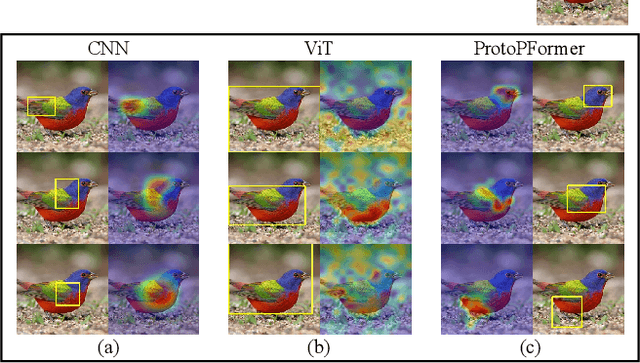

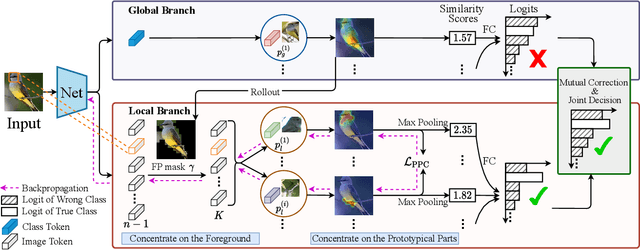

Abstract:Prototypical part network (ProtoPNet) has drawn wide attention and boosted many follow-up studies due to its self-explanatory property for explainable artificial intelligence (XAI). However, when directly applying ProtoPNet on vision transformer (ViT) backbones, learned prototypes have a ''distraction'' problem: they have a relatively high probability of being activated by the background and pay less attention to the foreground. The powerful capability of modeling long-term dependency makes the transformer-based ProtoPNet hard to focus on prototypical parts, thus severely impairing its inherent interpretability. This paper proposes prototypical part transformer (ProtoPFormer) for appropriately and effectively applying the prototype-based method with ViTs for interpretable image recognition. The proposed method introduces global and local prototypes for capturing and highlighting the representative holistic and partial features of targets according to the architectural characteristics of ViTs. The global prototypes are adopted to provide the global view of objects to guide local prototypes to concentrate on the foreground while eliminating the influence of the background. Afterwards, local prototypes are explicitly supervised to concentrate on their respective prototypical visual parts, increasing the overall interpretability. Extensive experiments demonstrate that our proposed global and local prototypes can mutually correct each other and jointly make final decisions, which faithfully and transparently reason the decision-making processes associatively from the whole and local perspectives, respectively. Moreover, ProtoPFormer consistently achieves superior performance and visualization results over the state-of-the-art (SOTA) prototype-based baselines. Our code has been released at https://github.com/zju-vipa/ProtoPFormer.
 Add to Chrome
Add to Chrome Add to Firefox
Add to Firefox Add to Edge
Add to Edge